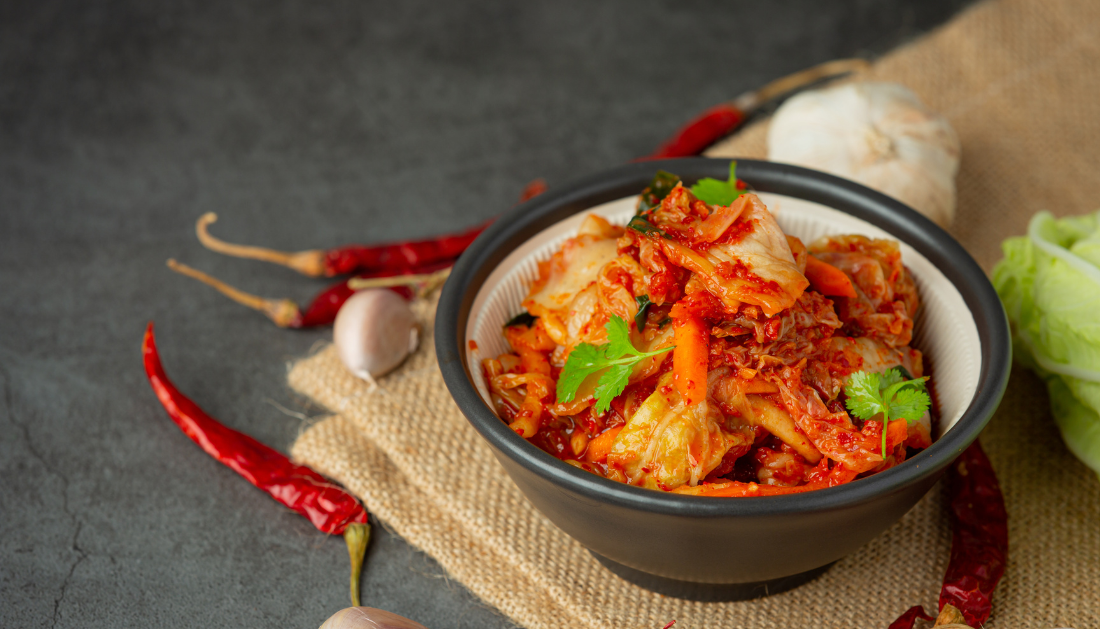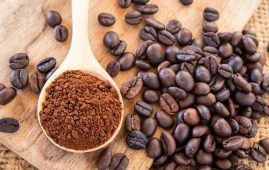

Kimchi is created by salting and fermenting vegetables with a variety of flavors and seasonings, including onion, garlic and fish sauce. The major vegetables used in kimchi are mainly cabbage and radish, which are low in calories and high in dietary fiber, microbiome-enhancing lactic acid bacteria, vitamins, and polyphenols.
Previously published experimental research found that Lactobacillus brevis and L. plantarum isolated from kimchi have an anti-obesity effect. And the researchers sought to determine if regular consumption was connected with a lower risk of overall and/or abdominal obesity, which is thought to be especially hazardous to health.
They used data from the Health Examinees (HEXA) research, which included 115,726 individuals (36,756 males and 78,970 women; average age 51). HEXA is a major, community-based long-term study within the wider Korean Genome and Epidemiology Study that aims to investigate environmental and genetic risk factors for common long-term disorders among Korean individuals over the age of 40.
Dietary consumption for the previous year was measured using a validated 106-item food frequency questionnaire in which participants were asked how frequently they ate a portion of each food, ranging from never or seldom to three times per day.
Total kimchi includes baechu (cabbage), kkakdugi (radish kimchi), nabak and dongchimi (watery kimchi), as well as mustard greens kimchi. A portion of baechu or kkahdugi kimchi is 50 g, while a portion of nabak or dongchimi kimchi is 95 grams.
Each participant had their height and weight, BMI, and waist circumference measured. A BMI of 18.5 was considered underweight, normal weight ranged from 18.5 to 25, and obesity was defined as a BMI of 25 or higher. Abdominal obesity was classified as having a waist circumference of at least 90 cm in men and 85 cm in women. 36% of males and 25% of women were obese.
According to the researchers, the data showed a J-shaped curve, which could be because higher consumption is connected with higher intakes of total energy, carbs, protein, fat, sodium, and cooked rice.
Participants who ate five or more servings of total kimchi each day weighed more, had a greater waist circumference, and were more likely to be obese than those who ate less than one serving. They were also more likely to lack higher education, have a poor income, and consume alcohol.
However, after controlling for potential confounding factors, eating up to three daily servings of total kimchi was related with an 11% decreased prevalence of obesity compared to less than one daily serving.
Men who ate three or more servings of baechu kimchi per day had a 10% lower prevalence of obesity and a 10% lower prevalence of abdominal obesity than those who ate less than one dish.
For more information: Association between kimchi consumption and obesity by BMI and abdominal obesity in Korean adults: a cross-sectional analysis of the Health Examinees study, BMJ Open, DOI: 10.1136/bmjopen-2023-076650
more recommended stories
 New Blood Cancer Model Unveils Drug Resistance
New Blood Cancer Model Unveils Drug ResistanceNew Lab Model Reveals Gene Mutation.
 Healthy Habits Slash Diverticulitis Risk in Half: Clinical Insights
Healthy Habits Slash Diverticulitis Risk in Half: Clinical InsightsHealthy Habits Slash Diverticulitis Risk in.
 Caffeine and SIDS: A New Prevention Theory
Caffeine and SIDS: A New Prevention TheoryFor the first time in decades,.
 Microbial Metabolites Reveal Health Insights
Microbial Metabolites Reveal Health InsightsThe human body is not just.
 Reelin and Cocaine Addiction: A Breakthrough Study
Reelin and Cocaine Addiction: A Breakthrough StudyA groundbreaking study from the University.
 Preeclampsia and Stroke Risk: Long-Term Effects
Preeclampsia and Stroke Risk: Long-Term EffectsPreeclampsia (PE) – a hypertensive disorder.
 Statins and Depression: No Added Benefit
Statins and Depression: No Added BenefitWhat Are Statins Used For? Statins.
 Azithromycin Resistance Rises After Mass Treatment
Azithromycin Resistance Rises After Mass TreatmentMass drug administration (MDA) of azithromycin.
 Generative AI in Health Campaigns: A Game-Changer
Generative AI in Health Campaigns: A Game-ChangerMass media campaigns have long been.
 Molecular Stress in Aging Neurons Explained
Molecular Stress in Aging Neurons ExplainedAs the population ages, scientists are.

Leave a Comment